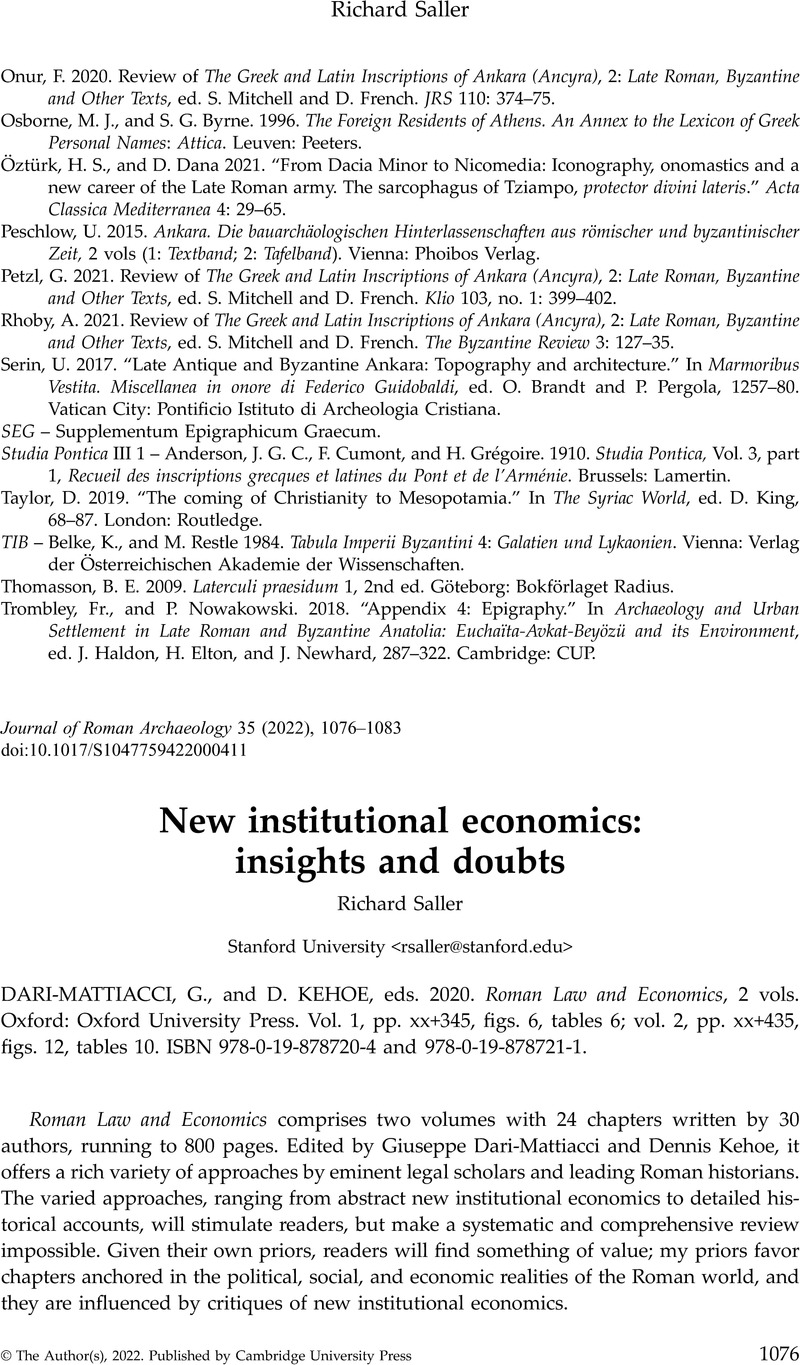No CrossRef data available.
Article contents
New institutional economics: insights and doubts - G. DARI-MATTIACCI, and D. KEHOE, eds. 2020. Roman Law and Economics, 2 vols. Oxford: Oxford University Press. Vol. 1, pp. xx+345, figs. 6, tables 6; vol. 2, pp. xx+435, figs. 12, tables 10. ISBN 978-0-19-878720-4 and 978-0-19-878721-1.
Review products
G. DARI-MATTIACCI, and D. KEHOE, eds. 2020. Roman Law and Economics, 2 vols. Oxford: Oxford University Press. Vol. 1, pp. xx+345, figs. 6, tables 6; vol. 2, pp. xx+435, figs. 12, tables 10. ISBN 978-0-19-878720-4 and 978-0-19-878721-1.
Published online by Cambridge University Press: 12 December 2022
Abstract
An abstract is not available for this content so a preview has been provided. Please use the Get access link above for information on how to access this content.

- Type
- Book Review
- Information
- Copyright
- Copyright © The Author(s), 2022. Published by Cambridge University Press
References
Crook, J. A. 1990. “‘His’ and ‘hers’: What degree of financial responsibility did husband and wife have for the matrimonial home and their life in common, in a Roman marriage?” In Parenté et stratégies familiales dans l'antiquité romaine, ed. Andreau, J. and Bruhns, H., 153–72. Rome: Ecole française de Rome.Google Scholar
Hollander, D. 2022. “Opaque, inconsistent, and unfair. Some remarks on the burden of Roman taxation during the Principate.” In Taxation, Economy, and Revolt in Ancient Rome, Galilee, and Egypt, ed. Blanton IV, T., Choi, A., and Liu, J., 59–71. Abingdon, UK, and NY: Routledge.CrossRefGoogle Scholar
Malanima, P. 2013. “Energy consumption in the Roman world.” In The Ancient Mediterranean Environment Between Science and History, ed. Harris, W., 13–36. Leiden and Boston: Brill.CrossRefGoogle Scholar
Ogilvie, S. 2007. “‘Whatever is, is right’? Economic institutions in pre-industrial Europe.” Economic History Review 60: 649–84.CrossRefGoogle Scholar
Saller, R. 1994. Patriarchy, Property and Death in the Roman Family. Cambridge: Cambridge University Press.CrossRefGoogle Scholar
Saller, R. 2022. Pliny's Roman Economy: Natural History, Innovation, and Growth. Princeton: Princeton University Press.Google Scholar
Temin, P. 2006. “The economy of the Early Roman Empire.” Journal of Economic Perspectives 20, no. 1: 133–51.CrossRefGoogle Scholar
Verboven, K. 2002. The Economy of Friends. Economic Aspects of Amicitia and Patronage in the Late Republic. Brussels: Latomus.Google Scholar


